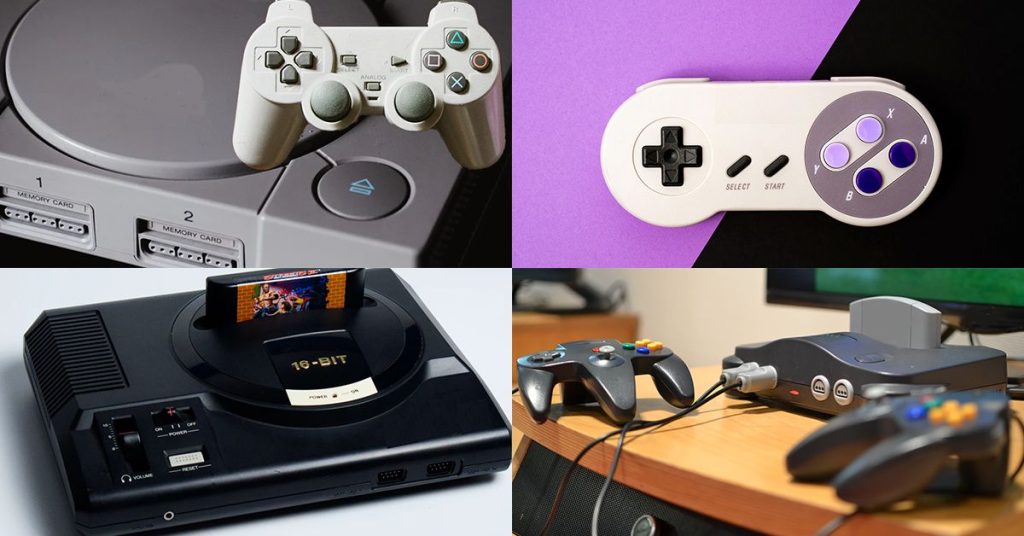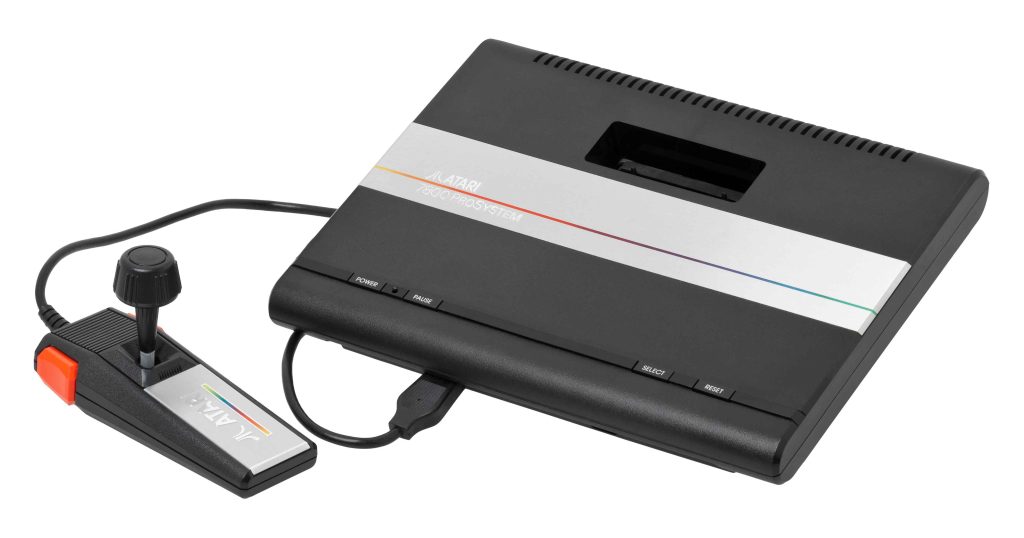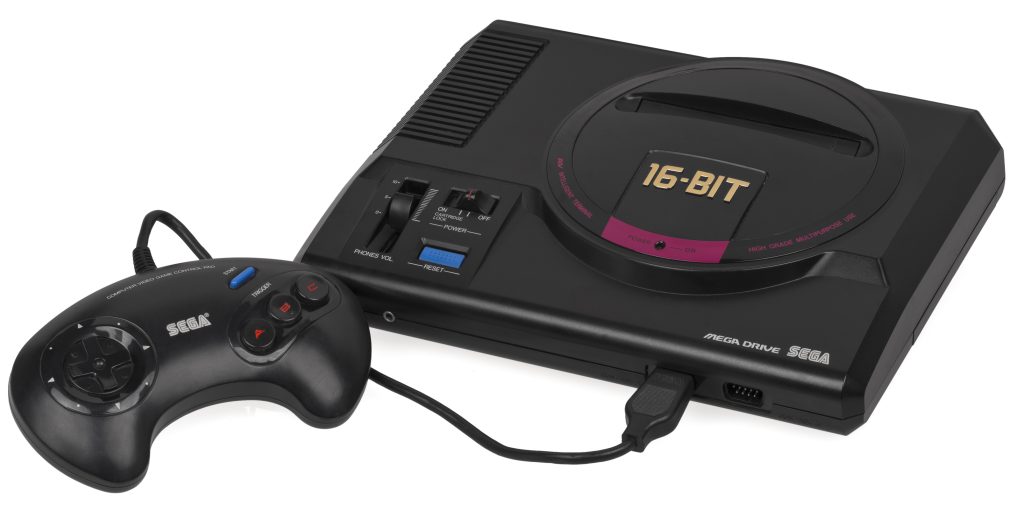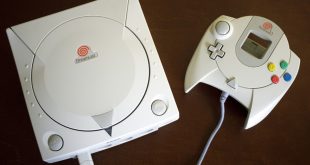Are you yearning for the old days when the only electronic “computer” devices in our homes were the video game consoles? Me too!
That’s why I’ve decided to write this article and cover some of the best consoles from the 80s and how they revolutionized the entire gaming industry. Let’s have a look together.

Consoles From the 80s
The 1980s were turbulent years for the gaming industry when many development companies faced ups and downs. Third and fourth-generation consoles were developed during this decade, like:
- Nintendo Entertainment System (1983)
- Sega SG-1000 (1983)
- Atari 7800 (1986)
- TurboGrafx-16 (1987)
- Sega Mega Drive (1988)
A decade defined by many ups and downs for the arcade gaming industry, the 1980s were a turning point from an unpopular and struggling market to the domination of video games that we have today.
Let’s now take a look at each of these video game-defining consoles individually.
Short Overview
Nintendo Entertainment System (1983)
The Nintendo Entertainment System, or as it is referred to as NES for short, was a third-generation arcade video game console released by the Nintendo corporation in 1983.
Primarily known as the Family Computer or Famicom in Japan, the console was redesigned by Nintendo and became available in North America in 1985.
NES was one of the most successful and best-selling consoles from the 80s, with almost 62 million copies sold worldwide.
After the video game crisis of 1983, which prompted renowned video game companies to declare bankruptcy, Nintendo became a revitalizing agent. It helped get the video game market back on its feet.
Games for the NES console were primarily designed and developed by in-house teams at Nintendo. Still, with the console’s spread to North America, Europe, and Australia, many third-party companies started to develop games.
The console had an 8-bit processor, meaning it could only process one 8-bit long “word” at a time. The more bits a processor has, the more data it can handle at once.
Sega SG-1000 (1983)
Sega Game 1000, or SG-1000, was a third-generation arcade video game console developed by Sega and the primary competitor to the Nintendo Entertainment System.
Unfortunately, the SG-1000 was not as popular as the NES, but it established Sega’s presence in the video game market for the years to come.
Several updated versions of the SG-1000 were released, like the SG-1000 II, the SC-3000, and the Sega Mark III. All of these consoles were a step forward for Sega but proved as the strong foundation for the later released Master System in 1986.
Like the NES, the SG-1000 was also powered by an 8-bit processor with 3.58 Mhz speed and 1 Kb of RAM. The SG-1000 had hardwired controllers, while the SG-1000 II featured detachable ones.
Since its release, the original SG-1000 console has sold only 400,000 units, while the entire SG-1000 series sold an estimated 1.4 million units worldwide.
Read more: Best SEGA Master System Games

Atari 7800 (1986)
The third-generation Atari 7800 gaming console was the successor to the Atari 2600 and Atari 5200. It is considered the first gaming console to support backward compatibility, as gamers could also play their Atari 2600 game carts.
Spec-wise, the console is nothing more advanced than the NES or SG-1000 consoles, even though it was released three years later.
Its initial release was set to be in 1984 but was canceled due to Atari’s consumer division being sold to Jack Tramiel. The release was scheduled for 1986, with a significant delay after the two competing platforms.
The console featured an Atari processor with 1.79 Mhz processing power, twice as low as the NES and SG-1000 consoles. On the other hand, it had 4 KB of RAM and a graphics processor chip with a speed of 7.15 Mhz.
However, the weaker processor resulted in the poor overall performance of the games, and it’s even considered a step down from its predecessor, the Atari 5200. The console’s controller was also badly designed and with poor intuitiveness.
TurboGrafx-16 (1987)
Another successful Japanese fourth-generation video game console was the TurboGrafx-16, also referred to as the PC Engine outside of North America. Hudson Soft designed it under the marketing and supervision of the NEC corporation.
The TurboGrafx-16 became a serious competitor to the NES Famicom console in Japan, where it came to be a top-selling console.
Unfortunately, sales didn’t go so well in North America and Europe because it was released four years later, while Nintendo and Sega dominated the market.
Running a similar 8-bit processor to its competitors, the TurboGrafx-16 could stand out by having two 16-bit graphics processing chips. Both graphic chips could display 482 from 512 colors, making games look much more realistic and detailed.
The TurboGrafx-16 was also the smallest home console ever made, and the original version could run games on so-called HuCards. Later versions (17 in total) also supported a CD-ROM add-on, which increased the console’s sales even further.
Also read: Best Selling Game Console of the 90s

Sega Mega Drive (1988)
Another on the list of the best consoles from the 80s is Sega Mega Drive (also known as Sega Genesis in North America).
It was among the first 16-bit fourth-generation consoles ever released. It’s one of my personal favorites, as I’ve spent countless hours as a kid playing on the Sega Mega Drive.
At its heart, the Mega Drive had a processor of 7.6 Mhz, a RAM of 64 KB, and a dedicated video RAM of 8 KB.
Unlike the TurboGrafx-16, its GPU could only display 61 colors simultaneously, but the games looked far better than on any other console at the time.
The Mega Drive also featured a simple 6-button controller with only one “Start” button in the middle and a traditional 8-way direction button.
Different versions and models of the console were released and succeeded by the Mega Drive 2 and Genesis 3.
The overall reception of the Sega Mega Drive was outstanding, selling over 42 million units worldwide.
It came close to its main competitor in this regard, the Super NES, which sold more than 49 million units worldwide, even though it was released two years later, in 1990.
 Commodore Games Play Online Games for Free | Unblocked and Unlimited
Commodore Games Play Online Games for Free | Unblocked and Unlimited



